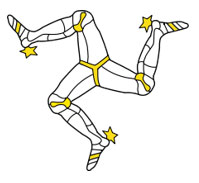
The flag of the Isle of Man, a small island between Great Britain and Ireland, shows a triskelion, the Three Legs of Man emblem, in the center of a red flag. The triskelion is an example of which transformation?

A. Reflection
Incorrect. To reflect it would be a mirror image. The legs turn.
B. Translation
Incorrect. Translate, or slide, would be moving one of the legs to get the next one. The legs turn.
C. Rotation
Correct! Each leg is rotated to form the next leg. The center of rotation is at the center of the yellow “Y” where the legs meet.
D. Glide Reflection
Incorrect. There is only one transformation.
For a class project Dmitri was assigned to find examples of a certain transformation. Dmitri brought in the following picture as example of his transformation.

A. Rotation
Incorrect. Remember a rotation is a reflection over intersecting lines. This pattern is a composition of two transformations.
B. Reflection
Incorrect. This pattern is a composition of two transformations.
C. Dilation
Incorrect. Dilation changes the size of the image. This pattern is a composition of two transformations.
D. Glide Reflection
Correct! This is a composition of a reflection and a translation – the same pattern that footprints make, which is a glide reflection.
Some polygons will tessellate a plane, while others will not. Which of the two polygons below, a pentagon and a hexagon, tessellate a plane when used by itself? Why or why not?
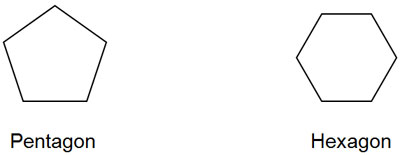
Which composition of the regular polygons below could be used to tessellate a plane?

A.The octagon and the square, because the sum of the interior angles of two adjacent octagons and one adjacent square is 360°.
Correct! The interior angle of an octagon is 135°. The interior angles of two octagons and one square, the sum of interior angles where polygons meet, equals 360°.
B. The pentagon and the square, because together they have 9 sides, which will divide evenly into 360.
Incorrect. To determine if they tessellate the sum of the measures of the interior angles where the polygons meet must be 360°.
C. The octagon and the equilateral triangle, because adjacent octagons have a triangular shape between their non-adjacent sides.
Incorrect. To determine if they tessellate the sum of the measures of the interior angles where the polygons meet must be 360°.
D. A composition cannot be made of any these regular polygons to tessellate a plane.
Incorrect. To determine if they tessellate the sum of the measures of the interior angles where the polygons meet must be 360°.
Which piece of art or architecture best exhibits the use of reflectional symmetry to create the pattern?

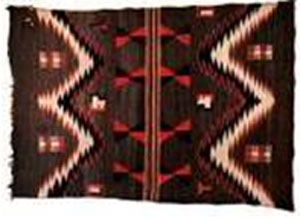
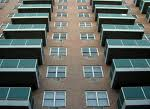
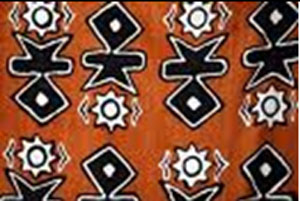
The quilting club Gina belongs to selected a quilt pattern that is an example of a transformation Gina is learning about in her Geometry class. She realized the quilt pattern is a tessellation formed by a composition of transformations.
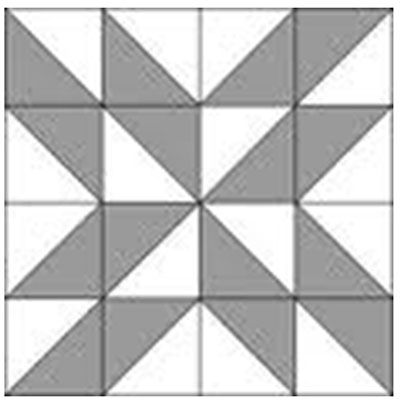
Which composition of transformations would result in this tessellating quilt pattern?
A. Two reflections over parallel lines
Incorrect. Reflections occur but not over parallel lines but not continually. Try again.
B. Two reflections over lines that intersect at a 30° angle
Incorrect. The lines are perpendicular and parallel. Try again.
C. Two reflections over perpendicular lines
Correct! Reflections over intersecting lines form a rotation. The lines in this case must intersect at a 90° angle.
D. Two translations over intersecting lines
Incorrect. Translations slide or move the object. The pattern changes. Try again.